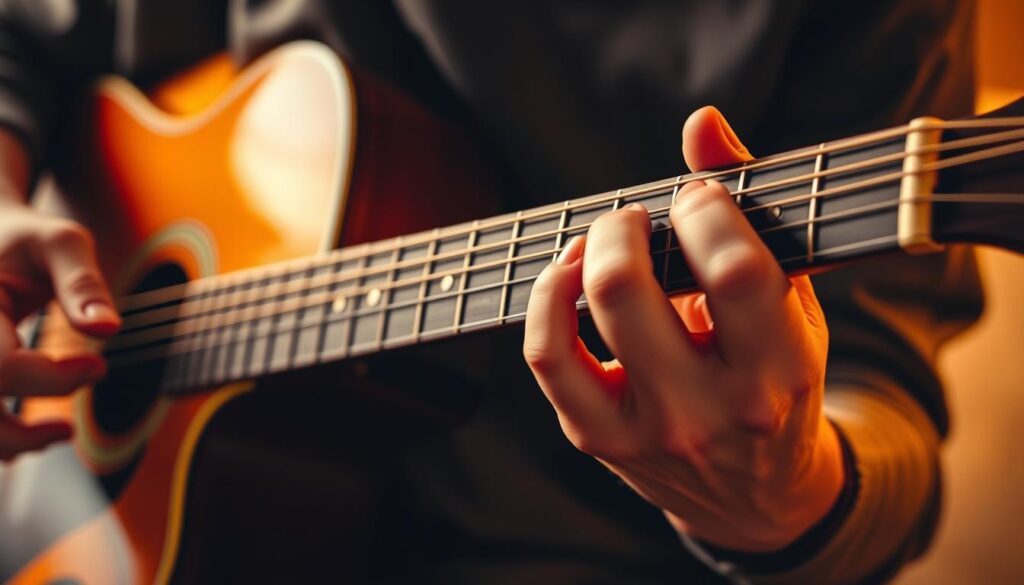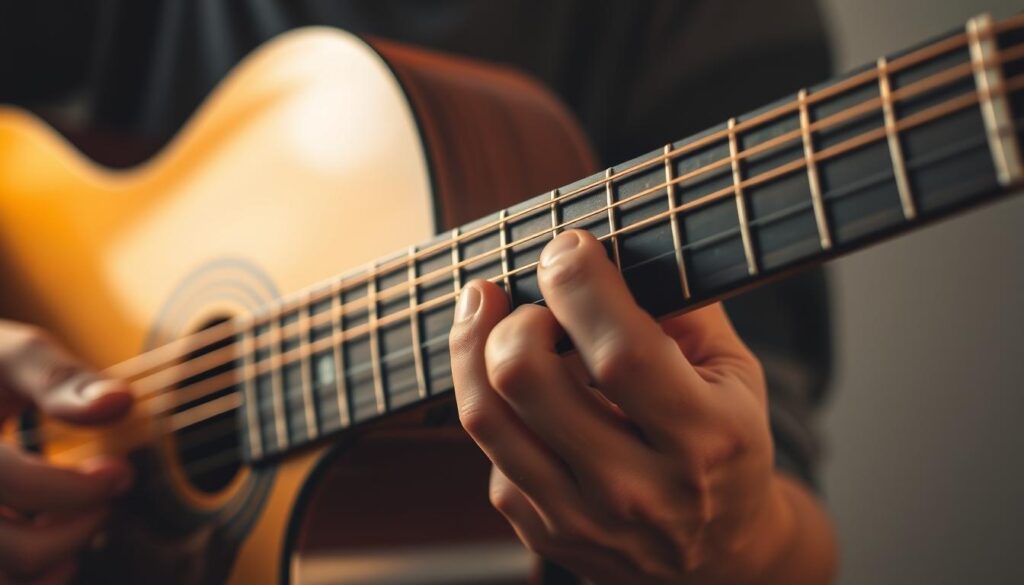Advertisements
Before reading this full article, you may also be interested in:
The guitar it's a instrument fascinating artist who has captured the imagination of many people around the world. Its presence in different cultures and musical styles is a testament to its versatility and appeal.
Herein guide, we will give you the tips necessary to begin your musical journey. Learning to play the guitar it's a process gradual that requires patience and dedication, but the benefits are numerous.
Advertisements
You will be able to enjoy the music in a deeper and more personal way, develop motor skills and, most importantly, have fun while doing it. Our guide is designed to learn guitar progressively, without requiring previous experience.
The first steps to learning to play the guitar
Starting to play the guitar can seem challenging, but with the right steps, you can effectively begin your musical journey. Learning to play this instrument requires patience, dedication, and a basic understanding of its components and how to use them.
Advertisements
See also
- Easy loans for retirees: Personalized financing
- How to learn Zumba at home effectively
- Learn to play the guitar easily with our guide
- Tea for More Energy: Top 5 for Your Daily Routine
- How to use Wi-Fi from anywhere even if you don't know the password
Choosing your first guitar
Choosing your first guitar is crucial. You should consider the type of music you want to play and your comfort level with the instrument. Acoustic guitars are ideal for beginners due to their simplicity and versatility. If you prefer the sound of an electric guitar, make sure you have a suitable amplifier.
String Types: Steel vs. Nylon
Guitar strings come in two main types: steel and nylon. Steel strings produce a bright sound and are ideal for styles like rock and country. Nylon strings are easier on the fingers and are commonly used on classical and flamenco guitar. Choosing between these types depends on your musical preferences and comfort level.
Learn the parts of the guitar
Understanding the parts of the guitar is essential for learning to play it. The main parts include the body, neck, strings, frets, and headstock. Familiarizing yourself with these parts will help you better understand the instructions and techniques you'll learn later.
How to tune your guitar correctly
Tuning your guitar is a fundamental step. There are several ways to do it, the most practical being with an electronic tuner. Cifra Club Tuner It's an excellent option; you can download it to your phone and have this tool with you whenever you need it. It works by displaying the note of each string and guiding you through tuning it correctly.
| Rope | Note |
|---|---|
| 1st | E4 |
| 2nd | B3 |
| 3rd | G3 |
| 4th | D3 |
| 5th | A2 |
| 6th | E2 |
By following these steps, you'll be able to tune your guitar effectively and start practicing with confidence.
Basic technique and correct posture
Mastering basic technique and adopting proper posture are the first steps toward success on the guitar. Good technique not only improves your sound, but also prevents injuries and makes learning more advanced techniques easier.
How to hold the guitar properly
Holding the guitar properly is essential for comfortable and accurate playing. The guitar should rest on your left leg, if you're right-handed, and be supported against your body so you can easily reach the strings.

Correct position of the left hand
The left hand is responsible for pressing the strings onto the fretboard. For proper positioning, the wrist should be relaxed and the fingers should be placed close to the frets, pressing the strings just behind them.
Correct position of the right hand
The right hand is responsible for strumming or plucking the strings. The correct position involves keeping the wrist relaxed and the fingers slightly curved over the strings, ready to strum or pluck with precision.
Identification of fingers and their function
It's very important to understand the role of each finger when playing the guitar. On the left hand, fingers 1 through 4 are identified, excluding the thumb. On the right hand, the letters p (thumb), i (index), m (middle), and ya (ring) are used to identify the fingers. The pinky finger can be referred to with the letter c (for little) when used.
Correct finger identification and use is crucial for developing advanced techniques and improving fluidity and rhythm. For more information on how to start playing guitar, you can visit this link.
| Hand | Finger Identification | Function |
|---|---|---|
| Left | 1-4 | Pressing strings |
| Right | Pima | Strumming or plucking strings |
Learn to play the guitar: first chords and songs
Now that you've learned the basics, it's time to start playing your first songs. With your basic knowledge solid, you can begin exploring the world of chords and songs in a fun and progressive way.
How to read chord figures and diagrams
To play songs, you must first understand how to read chord charts and diagrams. These diagrams show you where to place your fingers on the guitar fretboard. The numbers indicate which fingers to use, and the lines represent the strings. Practice reading these diagrams to familiarize yourself with the most common chords.

The basic chords you should know
There are several basic chords that are essential for any beginner. Some of the most common include the G, C, D, In, and A.MThese chords will allow you to play a wide variety of easy songs. Practice switching between these chords smoothly to improve your technique.
Strumming Techniques for Beginners
Once you've mastered the basic chords, it's time to learn strumming techniques. Start with simple down and up strumming patterns. The key is to maintain a constant rhythmPractice with a metronome to improve your sense of rhythm.
Your first song: step by step
To learn your first song, start by choosing one that uses simple chords. Break the song down into sections and practice each part separately. Start slowly and increase speed as you feel more comfortable. Recording your progress will help you stay motivated and evaluate your improvement.
Remember, consistent practice is key to improvement. Enjoy the learning process and don't be discouraged by obstacles! You can explore our song charts page to find easy songs and keep moving forward on your musical journey.
Conclusion: Stay consistent and keep making progress.
Now that you've reached the end of our guide, it's important to remember that the constant practice It is key to continue improving on your path to learn to play the guitar.
You've learned the basics, from how to choose your first guitar up to the first chords and strumming techniques. However, play the guitar It is an ongoing process that requires dedication and daily practice.
To continue progressing, we recommend:
- Establish a routine of practice daily, even if it is brief.
- Explore different musical styles and genres to expand your skills.
- Play with other musicians to exchange tips and experiences.
- Seek professional guidance when needed, whether through quality classes or online resources.
Remember that every small step forward is a significant achievement. Stay motivated and celebrate your progress. guitar It is an instrument that offers endless possibilities; keep exploring and enjoying the process of learn to play.
With perseverance and dedication, you can master the guitar and achieve your musical goals. Enjoy the musical journey!


